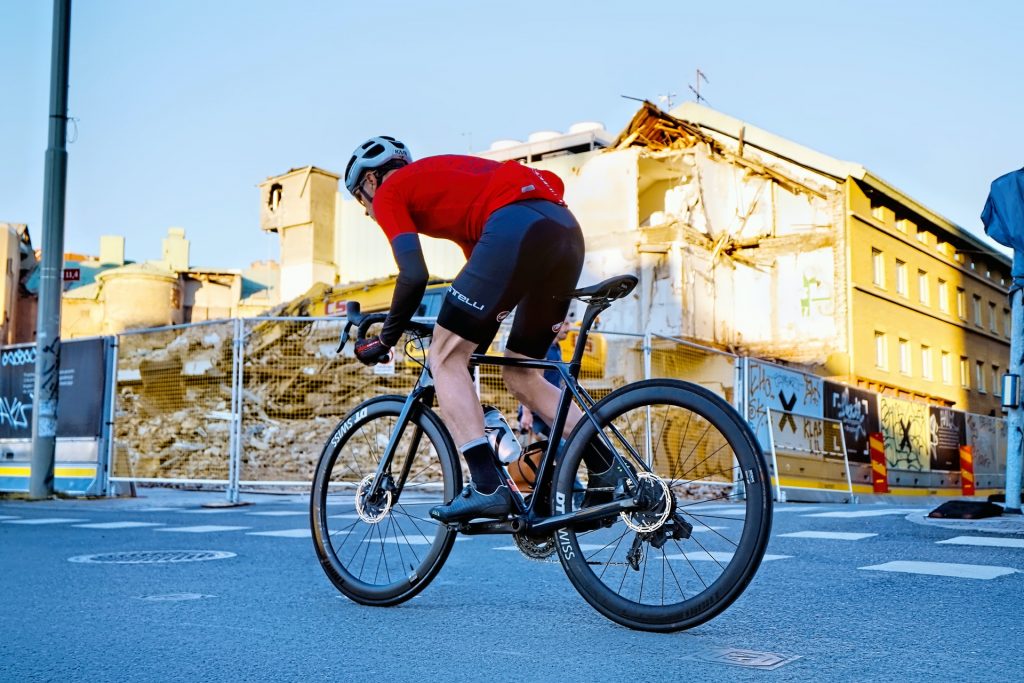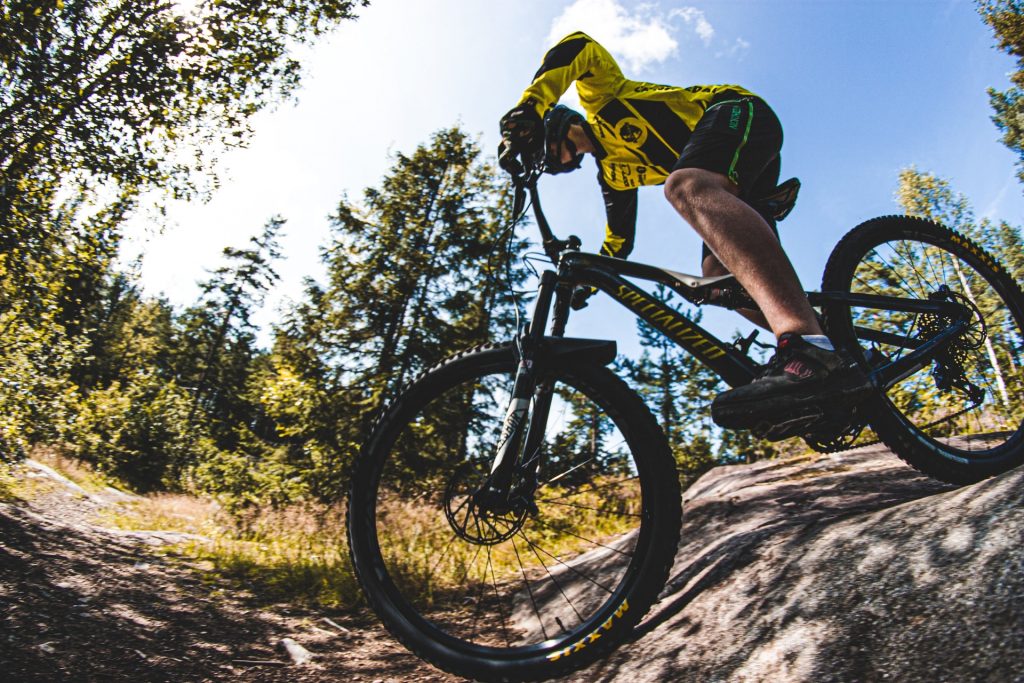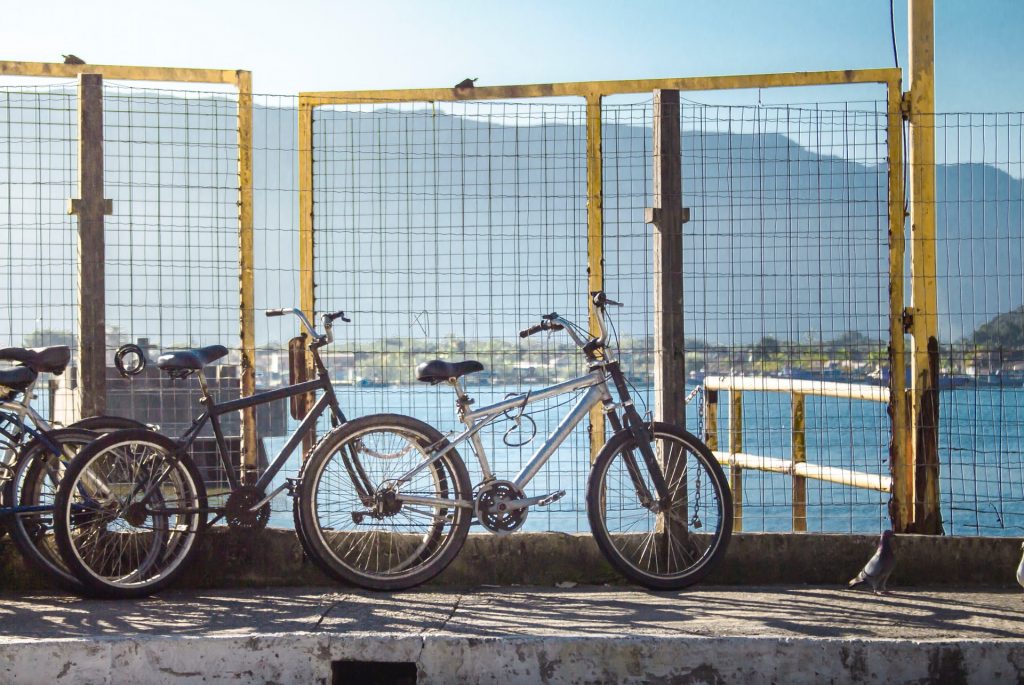Biking is one of the most diverse sports to indulge in. It can be as extreme or peaceful as you want it to be. Many types of bikes pertain to different agendas and terrains. There are bikes designed for gentle and steady long-distance traveling and others for harsh, more extreme biking performances.
Although there is a huge variety of bicycles and an ever-expanding range of sub-types, we can still fit most bikes into two general categories: mountain bikes and road bikes. While they look just the same at first sight, a mountain bike and a road bike are as different as day and night. In general terms, the most distinct difference is that mountain bikes are built for riding off-road terrains such as dirt trails and rocky roads, whereas road bikes are usually practiced on paved surfaces and tarmac.
Let’s see some factors and circumstances that help you decide which bike would suit you the most.
What Is a Road Bike?

At its core, a road bike is mainly designed for riding on roads and paved surfaces. They are lightweight, have narrow tires and short wheelbase, and roll fast on paved roads. They also have multiple gears you can change to, allowing you to move faster on flat surfaces and give you an easier time to climb uphill. Whether the purpose is to run errands, commute, exercise, explore, tour or race, road bikes are perfect for covering ground as quickly and efficiently as possible. However, due to lack of suspension and skinny tires, road bikes don’t like to venture too far off-road.
Road bikes are also designed to give you many options for hand and body positioning which make riding on longer trips more satisfying and less tiring. Drop handlebars offer an aerodynamic position allowing you to put more weight and pressure on your hands making you go faster with less energy expended when riding a steep hill or through a headwind. Additionally, road bikes come with flat handlebars which give you better visibility and control especially if you’re a new rider.
Road bike features
Below you will find more details on handlebar types and other essential characteristics of road bikes.
| Drivetrain | Shimano Campagnolo SRAM | Shimano system allows the rider to switch gears up or down and brake with one hand. Campagnolo system provides maximum stiffness to the crankset during upshifting. SRAM system optimizes chain alignment and improves shifting and performance. It is controlled by ‘Double Tap’ technology, using only one lever to switch gears. |
| Handlebars | Drop bars Flat Bars | Drop bars offer aerodynamic position for reducing wind resistance and increasing speed. Flat bars are better for steering the bike and making sharp turns quickly. They are helpful if you have back problems but become tiring on longer rides. |
| Frame | Steel Aluminum Titanium Carbon Fiber | Road bikes are typically made from either carbon fiber, aluminum, titanium, steel or a combination of these. Most expensive bikes are commonly made from carbon while cheaper ones may have a combination of aluminum and steel. |
| Brake type | Rim Brakes Disc Brakes | Rim brakes are more commonly used for general riding. Disc brakes are considered superior ,especially in wet weather. |
| Wheels | Lightweight Aerodynamic | Lightweight wheels keep rotating weight down by having a shallow rim profile and low spoke count. Aerodynamic wheels are fast and reduce drag. |
| Tires | Clincher Tubeless Tubular | Clincher is the most commonly used tire on road bikes. Tubeless tires create less friction which is better for improving rolling resistance and comfort on paved roads. Tubulars are mostly used by professional racers. They reduce weight and enhance rolling resistance. |
| Crankset | Compact Double Triple | Double and compact cranksets have 2 chainrings up front and a 10-speed cassette in the back which accounts for a total of 20 gears. A triple crankset has 3 chainrings; it has a 9-speed cassette on the rear which makes up a total of 27 gears. |
| Valve Type | Presta Schrader | Most new road bikes have a Presta valve. Older road bikes and many mountain bikes have a Schrader Valve. |
| Suspension | No Suspension | Unlike mountain bikes, road bikes are built with no suspension. Because road biking is practiced on flat and smooth paved roads, they do not require suspension for extra comfort |
Road Bike: pros & cons
While road bike pros far outweigh the cons, it is important to take them into consideration before deciding to do the purchase.
| Pros ✅ | Cons ❌ |
|---|---|
| Lightweight with components that are all about maximum speed and efficiency | Not as durable as mountain bikes |
| Well-equipped to travel long distances | Unstable to venture too far off-road |
| Requires less maintenance | Aggressive riding positions can be uncomfortable for casual riders |
| Ideal for exercising as road bikes target particular zones and intensities needed to get a better and more inclusive workout | Expensive in comparison to mountain bikes. Road bikes go Gucci when added extra gear such as clothing and lighting |
| Easily accessible |
What Is a Mountain Bike?

Mountain bikes started to gain popularity in the 1970s and 80s as people began to customize their road bikes for bumpy, unpaved roads, especially in mountainous regions. Nowadays, mountain bikes come with a range of different suspension systems, wide and shock-absorbing tires, flat handlebars, and lower gearing so you can have extra speed and efficiency when powering up climbs.
What sets them apart from road bikes is that mountain bikes have thick nubby tires, and they cannot go fast on paved roads. However, that doesn’t mean that they cannot be used on roads at all. Mountain bikes have nowadays become a popular urban transport thanks to their relaxed riding position. Flat handlebars offer a more upright body position that many people find more comfortable than the handlebars of road bikes.
Mountain bike features
Find detailed information on mountain bike features below.
| Drivetrain | Shimano SRAM | Mountain bikes that use Shimano feature a “Rapid Fire” technology which allows the riders to use the thumb to move the derailleur in one direction and the forefinger to send the derailleur in the opposite direction. SRAM groupsets feature a 2x and 1x drivetrain which was considered big on innovation and even bigger on performance. |
| Handlebars | Flat Bar | Mountain bikes usually have a flat bar because it offers a more upright position with a wider stance. This type of handlebar is preferred by riders on technical terrains and downhill riding because it provides more control. |
| Frame | Steel Aluminum Titanium Carbon Fiber | Most mountain bikes are made of aluminum which is the most prevalent metal used. Titanium is also very common but limited to expensive higher-end models. Carbon fiber is more popular with road bikes but some cross-country bikes use carbon fiber to be as light as possible. |
| Brake type | Disc Brakes Hydraulic Cable-activated | Many off-road bikes today come with disc brakes. They are less affected by wet and muddy conditions and offer better control. Hydraulic brakes use a fluid system to shift power from the brake lever to the brake pads. Being a sealed system, they offer excellent modulation, stopping power and reliability. Cable-activated brakes work almost the same as hydraulic brakes but they are more susceptible to dirt and rust. |
| Tires | Tubeless Tubular | Tubeless tires conform to the ground better giving you a cozy ride on rough terrains and more grip in the corners. They also reduce the chance of getting a puncture. Tubulars offer bump absorption and make for a better grip. They also can be run at lower pressure without having to worry about damages to the rim. |
| Crankset | Single chainring Double Triple | Double and triple cranksets are usually found on entry-level bikes but their popularity is slowly decreasing. The most trendy crankset nowadays is the single chainring commonly referred to as a “1x” |
| Valve Type | Schrader | The majority of mountain bikes use a schrader valve because it is wider and more robust than the presta valve. |
| Suspension | Rigid Hard Tail Full-Suspension | Rigid mountain bikes don’t have any suspension. The rigid type is usually found on fat bikes since their huge tires provide all the squish needed to absorb bumps. Hardtails have a front fork but no rear suspension. This allows the rider to transfer power between the pedal stroke and the rear tire. Full suspension or dual suspension bikes have both front fork and a rear suspension. The idea behind the dual suspension system is for the front fork and rear to absorb as many impacts as possible. As a result, they offer better power transfer and easier climbing. |
Mountain bike: pros & cons
While a mountain bike is a king when it comes to handling rough terrain, it doesn’t perform as good on paved surfaces. Here’s how the pros and cons stack up.
| Pros ✅ | Cons ❌ |
|---|---|
| Sturdier frames and rugged components are built to withstand abuse and multiple impacts better | Sturdier frames and rugged components make mountain bikes heavier; making uphill climbing and commuting long distances difficult at times |
| Can be used on paved roads as well | Wheels have more rolling resistance |
| Different suspension options offer more control and tires remain in contact | Require more effort when riding on paved roads and can’t move as quickly |
| Thick and knobby tires offer better grip and can handle potholes and rocks |
Bottom Line, Which One Is Better: Road Bike or Mountain Bike?

A question that gets around a lot is “which one is better, a mountain bike or a road bike”?
Well, the answer is that both mountain and road bikes are good and neither is better than the other. It all depends on personal preferences and riding style. Everyone is different and so are their needs. The key is to understand which type of bike fits you the most and ask yourself where you will be riding the bike. Once you’ve narrowed down your choices, you can figure out which model feels most comfortable for you.
While there is some overlapping between road and mountain bikes, they are essentially built to serve entirely different purposes. If you look closer, you’ll notice numerous differences in frame geometry, crankset, brake types and other components depending on the bike’s purpose.




